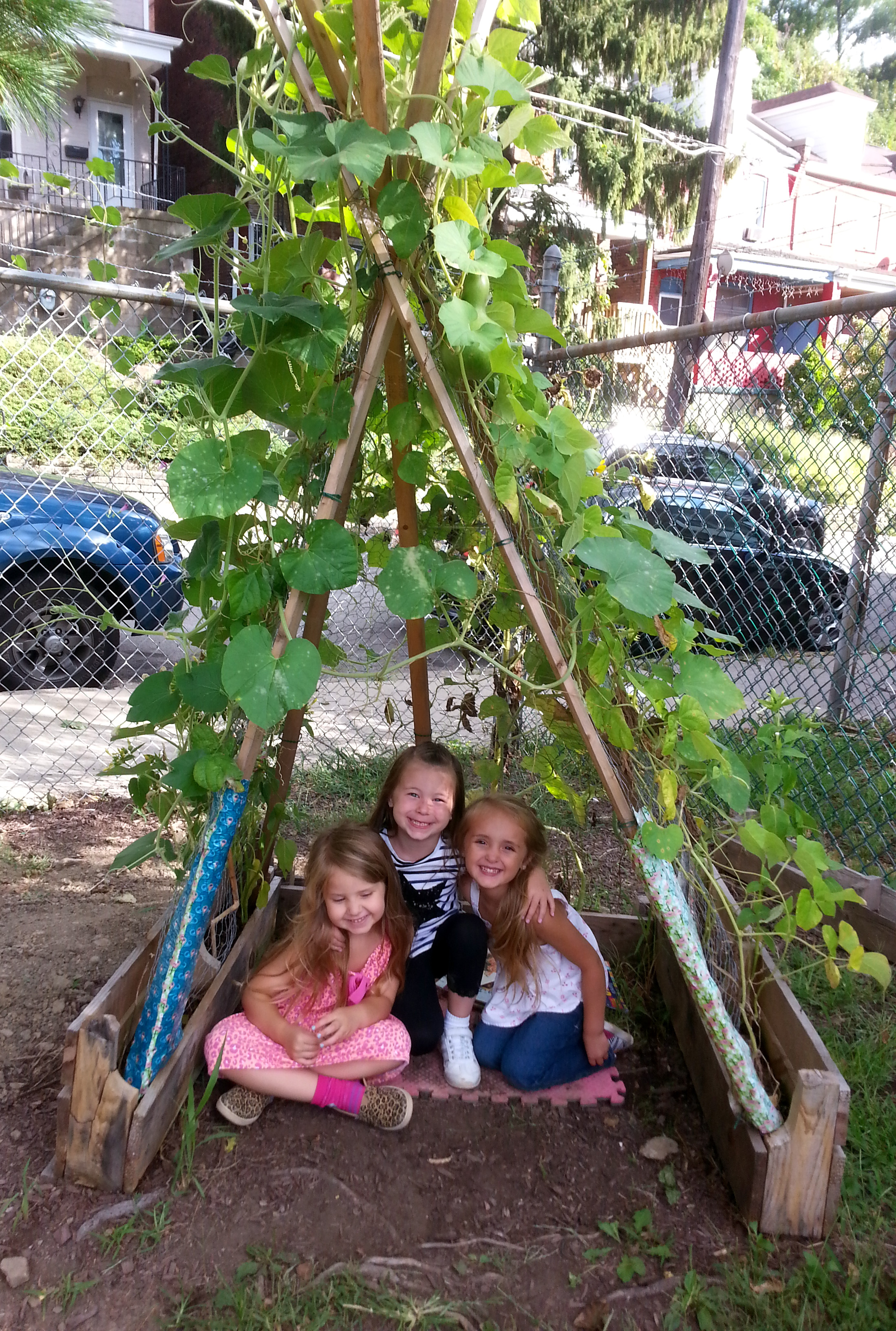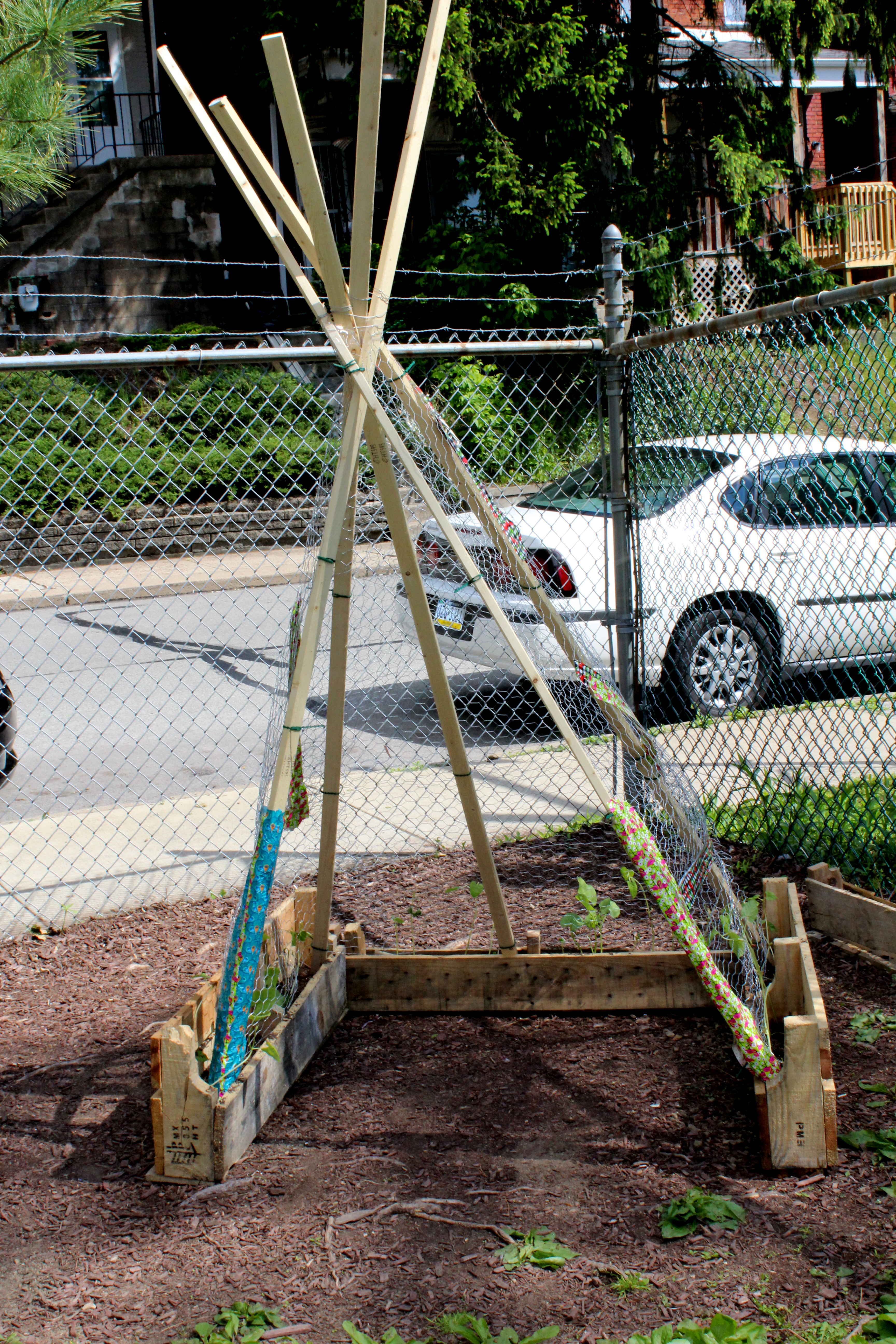Blog

Health in Motion: Mt. Washington Children’s Center
This article is a part of a series called Health in Motion brought you by Let’s Move Pittsburgh. Health in Motion is intended to showcase the efforts of schools and community organizations in the Pittsburgh region who are leading children to a healthier future. A new project with a guest author or interviewee will be featured each month. Let’s Move Pittsburgh hopes that Health in Motion will encourage leaders to adopt healthy programs in their communities and inspire readers to make healthy changes in their own lives.
Fee-fi-fo-fum the MWCC Garden is Full of Fun!
It’s not very often you find a childcare center that encourages the children to dig in the dirt and play with their food, but that’s exactly the approach we’ve taken at Mount Washington Children’s Center.
Last summer, after receiving the Let’s Move Pittsburgh grant, our children and teachers jumped right in, creating a garden oasis in the heart of a busy city neighborhood. We chose to put our Health in Motion by focusing on farm-to-table activities combined with outdoor exercise. One of our goals was to reinforce these lessons at home. For our working families, packing a 20-ounce bottle of Mountain Dew and three-pack of powdered doughnuts for their child’s breakfast (We’ve seen it happen!) is more affordable and accessible than packing a fresh-from-the-garden meal. We hoped to change that.

Over the past year, the children germinated seeds, measured their growth, helped make fresh meals, hosted taste tests and shared our harvest at a mini farmers market for our families. Each child took home their own potted seed to grow, as well. Every week we asked the children to share a story about how their plants were growing. Through this, we were able to see if we were reaching our families. Some were more involved than others.
One of our pre-K girls, Lacey, took home a bean plant. Each day she and her mother watered and cared for the plant. As the weather grew warmer, the two moved the pot to their outside porch. One night a hungry deer made her way to the porch and ate the bean right off the plant! Lacey was devastated as she told the story. At school, we talked about how farmers face the same problems when they grow crops and thought of ways to protect our plants. Other children shared similar stories and photos of their own plants. As the weeks went on, we could see positive changes in the way they took responsibility for their plants and the mealtime choices they made.
One of the most memorable activities for our kids has been growing the bean teepees whose green tops peak above our playground fence. Here’s how we built our teepees, with the children’s and parents’ help along the way.
Materials:
- Pole bean seeds
- 5 to 7 wooden or bamboo posts (Ours are 5 feet high.)
- Twine or fishing line
- Plastic safety fencing or old vines and twigs
- About 2 yards of topsoil (We used 1 yard of mushroom mulch and 1 yard of topsoil.)
- Twist ties, string
Directions:
Prior to planting, we grew our bean plants from seeds until they were large enough to be planted outside.
We placed our posts in a slightly shady area of our playground, creating a teepee shape, and tied the posts tightly together at the top using the twine. (We created a small wooden bed at the base of our teepee, but this is not necessary.)
Next we wrapped the teepee with the fencing, vines or twigs could be used for the same effect, to allow the beans to fill out the teepee.
We then added topsoil and mulch to the outside base of the teepee, deep enough to provide our plants with enough space to grow. The children planted the plants, and as they grew, guided the plants through the fencing to help fill out the teepee. To help the plants stay on track, twist ties can be used to better attach the plants to the frame.

For some variety, we also added gourd seeds to see how they would grow along with the bean plants. We’ve already started on this year’s sprouts!

